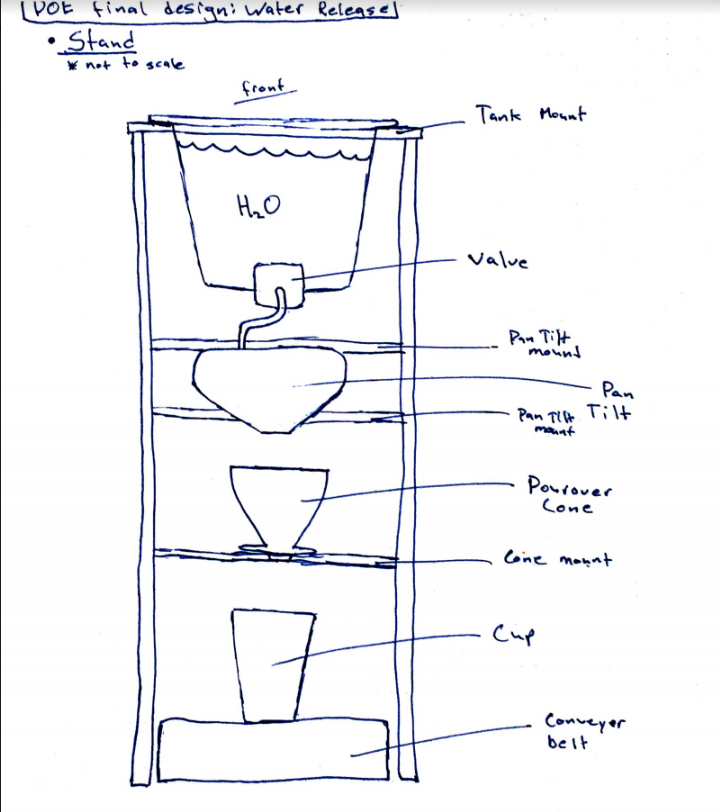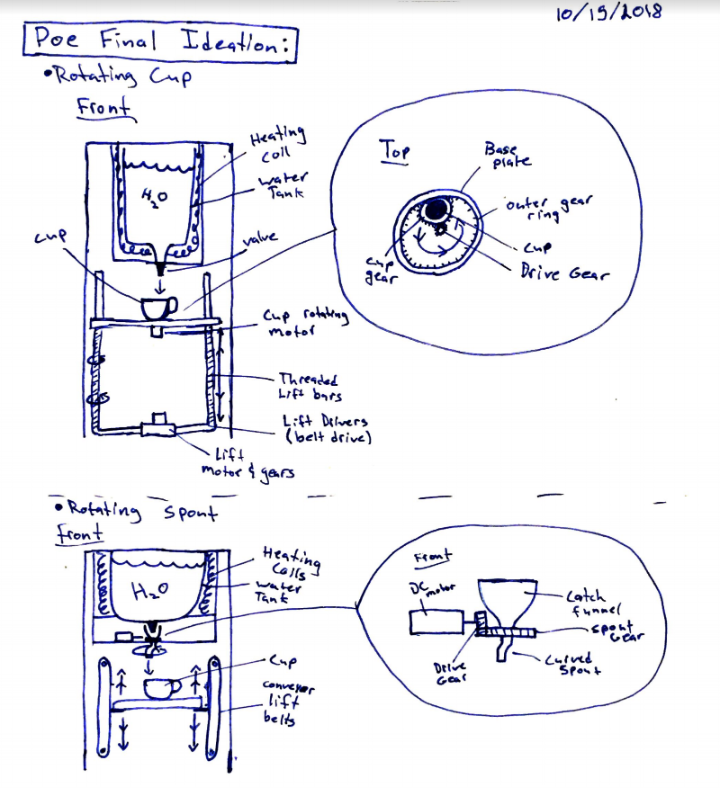BaristaBot
BaristaBot was created as my team's final project in Olin's Principles of Engineering class. The prompt for the assignment was to create a project that had non-trivial mechanical, electrical, and software components with a $250 budget. My team and I wanted to make something that was mechanically complex and aesthetically appealing while also serving a functional purpose. We were inspired by the assembly line style machinery commonly seen in the show "How it's Made" so we decided to create an overly complex, assembly line style coffee machine, the BaristaBot.
Process:
Prototype:
To implement our idea we broke up the system into each of the steps required to make pour-over coffee.
The first station we implemented was the water/pouring station. We chose to start here because even with just this station we would still end up with a finished cup of coffee. We also viewed the water containment and heating system as one of our biggest challenges, so we wanted to get it out of the way early.
This sketch and CAD model depicts the layout of our minimum viable product. This system requires the user to place the cone, filter, and grounds but this system functioning correctly we will be make a finished cup of coffee. Instead of the gearing system shown for creating the pouring pattern, we adapted a pan-tilt mechanism from an earlier project to create a spiral pouring pattern.

Initial Prototype Sketch

Valve Design Sketch

Examples of Ideation for Pour Over Mechanism

Prototype CAD

Prototype
We then began to work on the non-vital parts of the coffee making process including a bean grinder, cup dispenser, conveyor belt, and filter replacement, as well as redesigning the “pour tower” section which was featured in the initial prototype
The CAD was done using SolidWorks.
The main structure is plywood cut on a ShopBot CNC machine and stained with old coffee grounds from past testing.
The water heating system and bean grinder consist of scavenged components from e-waste and one purchased Nema 23 motor.
The rest of the components are 3D printed PLA.
Final Design:

Conveyor Belt CAD

Bean Grinder CAD

Cup Dispenser CAD

Pour Tower CAD

Final Assembly

